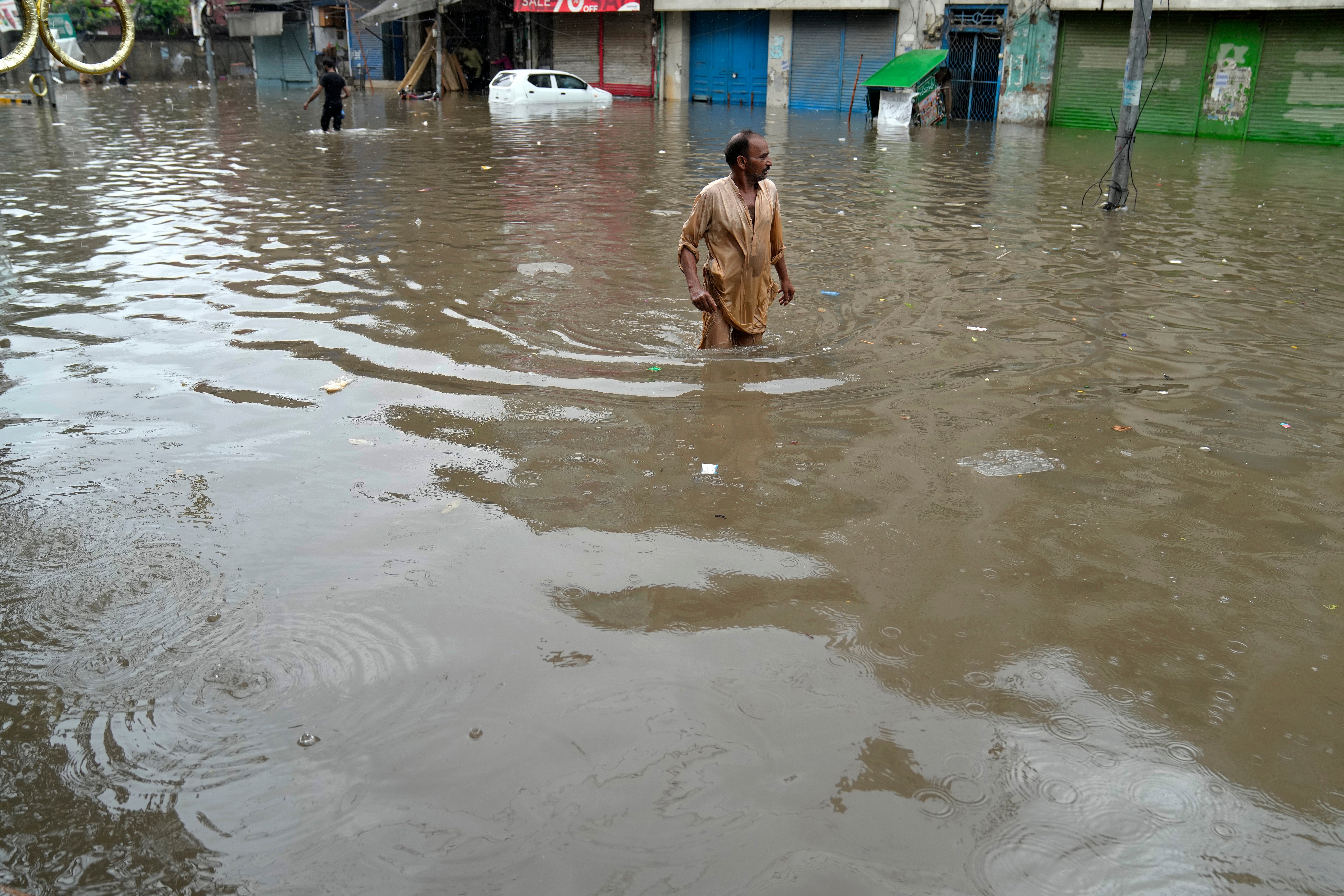More than 100,000 evacuated as flooding returns to Pakistan
Sutlej river swelled to ‘extremely high levels’ on Saturday, at one point expanding around 4km wider

Authorities in Pakistan have evacuated over 100,000 people after weeks of rainfall once again led to a dangerous flooding situation, in a grim reminder of last year’s catastrophe.
The evacuation orders covered large parts of the eastern Punjab region along the Sutlej River where flooding has been recorded in the last three weeks, officials said on Wednesday.
Sutlej river swelled to “extremely high levels” on Saturday, at one point expanding around 4km wider, more than the Indus river, data showed.
The swelling of the river inundated several districts, prompting more rescue operations in recent days.
Most of the evacuations were reported in the districts of Bahawalpur and Kasur in Punjab province.
Small-scale evacuations had already begun in July after neighbouring India diverted water from dams into the Ravi River, which flows from India into Pakistan.
Later rainfall also flooded the Sutlej river, prompting authorities to evacuate people living nearby.
The national disaster management agency said water levels in the Ravi river are currently normal, but will rise further in the Sutlej river this week.
The water inundated roads and also threatened several government buildings in Hussainiwala city, including the National Martyrs Memorial.
This year, once again Pakistan has been struggling with flooding in low-lying areas due to heavy rainfall that has killed over 170 people since June.
The rainfall has also sparked catastrophes in neighbouring India, including flooding in national capital Delhi and landslides in the hilly regions of Uttarakhand and Himachal Pradesh.
South Asia receives 70-80 per cent of its yearly rainfall in the three-month monsoon season starting in June. However, various scientific assessments have found that increasing global temperatures due to the man-made climate crisis are making rainfall more intense and erratic, leading to more flooding.
Other factors, such as infrastructural vulnerabilities, also make the region highly prone to the increased impact of the disaster.
Pakistani authorities are still struggling to overcome the damage caused by massive floods last summer that affected 33 million people and killed 1,739. The floods caused $30bn in damage to the country’s economy.
Join our commenting forum
Join thought-provoking conversations, follow other Independent readers and see their replies
Comments


Bookmark popover
Removed from bookmarks